The Tailor-Made Guide to Tourist Places to Visit in Delhi - Museums
- Barry Pickard

- Sep 19
- 10 min read
Updated: Oct 11

Disclosure: This post contains affiliate links. Regardless of this, please be advised that all opinions expressed in this blog post are genuine and authentically my own.
Author: Barry Pickard
Hi, I'm Barry, the owner of Tailor-Made Itineraries and I have been designing bespoke self-guided tours for adventurous and curious travellers since 2015. I am a history graduate with a passion for travel.
I created this blog to show, through my own adventures, how you can have an incredible travel experience as an independent traveller, giving you the information to navigate the world with confidence.
Contents
Red Fort Museums
What's the best way to truly understand a city's soul without getting lost in overcrowded tourist traps?
The answer hit me as I walked through the underground galleries of the National Police Memorial, where the hushed reverence was broken only by the soft echo of footsteps on polished marble and the gentle sound of water flowing over the memorial's granite surface. Above ground, the late afternoon sun cast long shadows across the Wall of Valour, its inscribed names creating a stark reminder of sacrifice that no history book could convey. This wasn't your typical museum crawl – this was Delhi revealing its authentic character through spaces that most independent travellers completely miss.

After exploring India's capital many times and visiting dozens of museums, galleries, and cultural sites, I've discovered that the best tourist places to visit in Delhi aren't always the ones that make it onto every Instagram feed. Sure, you'll find the Red Fort here (because it's genuinely spectacular), but you'll also discover hidden gems like a museum entirely dedicated to toilets and the chambers where Gandhi spent his final days that left me genuinely moved.

I'm sharing these nine museums because each one taught me something unexpected about India's past, present, and future – and because I know how frustrating it can be to waste precious travel time on disappointing attractions. These aren't just places to kill a few hours; they're windows into stories you won't find anywhere else, complete with practical tips I learned the hard way, so you don't have to.
Don’t forget that Tailor-Made Itineraries delights in creating bespoke self-guided tours. So, if visiting any of these museums appeals to you, reach out to me by email. I would be more than happy to design a self-guided tour around your requirements incorporating the tourist places to visit in Delhi, or indeed, those of India in general.

Tourist Places to Visit in Delhi
National Crafts Museum
The National Crafts Museum is a vibrant museum dedicated to traditional arts and crafts. Established in 1956 the museum houses over 35,000 artifacts, including textiles, tribal art, sculptures, and everyday objects from across India.

Highlights include the Textile Gallery, which features rare and historic fabrics like Baluchari saris, Kutch embroidery, and Kashmiri dushalas, and the Tribal and Rural Craft Gallery, which displays masks, terracotta, and ritual objects.
There is also a Village Complex, which is a 5-acre open-air exhibit with 15 life-sized structures representing rural homes, shrines, and courtyards from different Indian states. Originally created for a 1972 exhibition, I found it a great way to easily experience rural India without the travel.
The museum also offers a platform for artisans from across India to demonstrate their crafts live, offering visitors a chance to interact and even purchase handmade items directly.

Tailor-Made Top Tipss:
Go earlier in the day in order to see their displays and demonstrations. I arrived later in the afternoon, and I missed some of these attractions.
The museum has a lovely café, which is perfect for lunch or a light snack.
Note this and most other museums are closed on Mondays.
National Rail Museum
The National Rail Museum showcases the rich heritage and evolution of the Indian Railways. The museum spans over 11 acres and is designed to resemble a real railway yard. The highlight is the Outdoor Gallery, which features almost 100 vintage trains and carriages, including a mixture of steam, diesel, and electric locomotives and Royal saloons (e.g., Prince of Wales Saloon, Mysore Maharaja Saloon).

There is also an Indoor Gallery, which houses interactive displays, models, and historical artifacts. I found its exhibit on the mountain railways of India fascinating, especially the vintage photographs, because earlier in this trip to India, I had the chance to ride the Darjeeling Toy Train, which was a great experience.

Tailor-Made Top Tips:
The Toy Train which regularly chugs through the museum grounds is a very popular attraction for little and big kids alike. When getting your entrance ticket, make sure to get your separate ticket for the Toy Train.

There is an excellent cafe in the centre of the museum grounds, ideal for a light lunch or snacks.
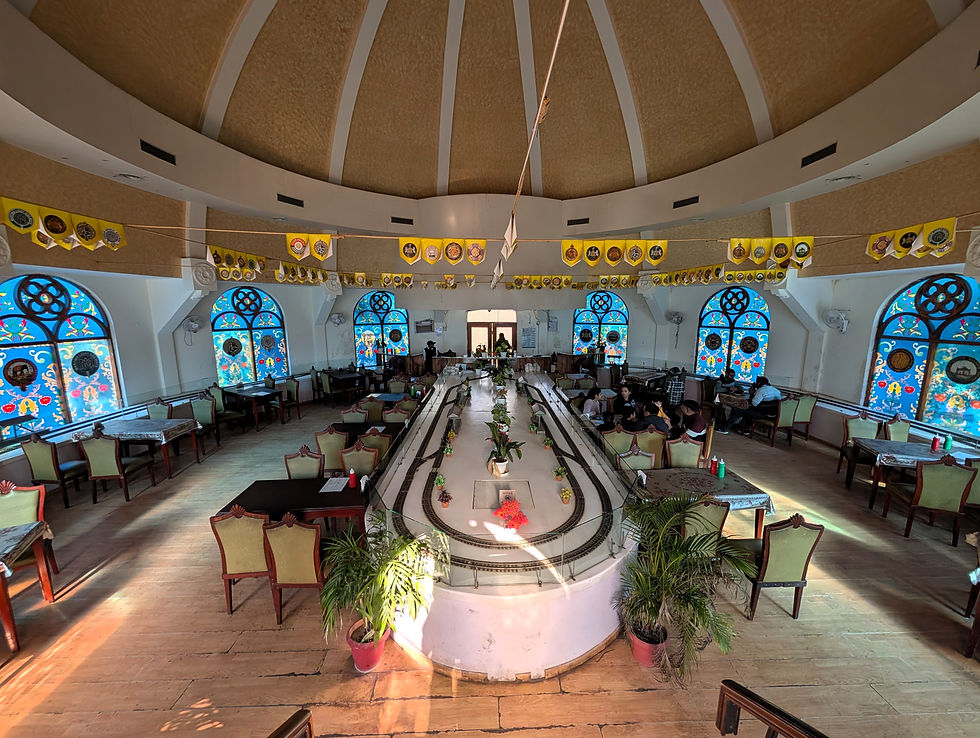
If you are enjoying this list, remember and subscribe to my mailing list to receive my latest blog posts.
Pradhanmantri Sangrahalaya
The Pradhanmantri Sangrahalaya is an immersive museum that celebrates the legacy of all Indian Prime Ministers since independence. It’s designed to be both educational and engaging, using cutting-edge technology to bring history to life.

The museum is divided into two main buildings. The first building that you come to, is a classically styled edifice which was one home to the early Prime Ministers and now provides a detailed celebration of Jawaharlal Nehru’s life and contributions.

The second building is a newly constructed wing that houses exhibits on all other Prime Ministers, from Lal Bahadur Shastri to the present. I think you will agree that it is an impressive and eye-catching structure!

The museum boasts 43 Thematic Galleries, dedicated to showcasing each Prime Minister’s personal journey, leadership style, and national contributions. Other highlights include a gallery dedicated to the Constituent Assembly and the framing of the Indian Constitution and a Rare Gifts Gallery, which displays never-before-seen gifts received by Prime Ministers from around the world.
Tailor-Made Top Tip:
Plan to spend at least an hour and a half here, as the museum has plenty of information to review and see.
National Police Memorial & Museum
The National Police Memorial & Museum combines a solemn memorial with an immersive museum experience, making it both a place of remembrance and education. As I wondered along the well-maintained memorial grounds and the underground museum, I was shocked to learn that over 35,000 police personnel have laid down their lives in the line of duty since independence. This is certainly a fitting tribute to these courageous people.

The central sculpture in the memorial grounds is a 30-foot-high black granite monolith weighing 238 tonnes, symbolizing strength and sacrifice. The sculpture is placed beside a 60-foot-long water body, representing the continuous service of the police. There is also the Wall of Valour – a curved wall inscribed with the names of all police martyrs.
The museum is a 40x40 meter underground space that offers a comprehensive and interactive journey through the history and evolution of policing in India. The exhibit includes interactive displays, artifacts and life-size sculptures.
Tailor-Made Top Tip:
The memorial and museum is free to enter, but you still need to present your passport (or at least have a copy of it available on your phone).
Air Force Museum
A firm favourite with both families and aviation enthusiasts, the Air Force Museum is packed with airplanes, history exhibits and memorabilia. The outdoor display includes large aircraft like an Canbera, and B24 Liberator. Meanwhile, the large hanger displays a variety of vintage aircraft like the MIG-21 and Spitfire. My personal favourite part of the museum, however, was the exhibit room adjoining the hanger, where the Indian Airforce’s campaigns were explained. As a closet military history geek, I found this fascinating!

Tailor-Made Top Tip:
If you are interested in collecting military memorabilia, squadron patches and the like, the museum shop is an absolute treasure trove.
If you are enjoying this list, remember and subscribe to my mailing list to receive my latest blog posts.
Sulabh International Museum of Toilets
The Sulabh International Museum of Toilets is perhaps the most unusual museum in Delhi, if not India. The museum offers a deep dive into the history of sanitation and toilet technology across cultures and centuries. Founded in 1992 by Dr. Bindeshwar Pathak, a renowned social reformer and sanitation advocate, this free museum has several thematic sections. Ancient Sanitation Systems from the Indus Valley Civilization, Roman Empire, and medieval Europe are explained. Then there are plenty of examples of chamber pots, early flush systems, and ornate lavatories used by royalty. Meanwhile modern sanitation is also covered with displays of eco-friendly toilets, water-saving designs, and futuristic sanitation technologies.

Tailor-Made Top Tip:
Within the complex that houses the museum, there is another building where you can view a really informative and interesting video presentation on Sulabh’s water purification projects. It only lasts 10-minutes, but it is well worth watching.
Red Fort Museums
The Red Fort, also known as Lal Qila, was built between 1638 and 1648 as the new imperial residence of Shah Jahan. The fort was constructed of red sandstone and marble, and it is decorated with intricate carvings and inscriptions. The fort is surrounded by a moat and has a high wall with 13 gates.

The Red Fort in Delhi is home to several fascinating museums that showcase India's rich history, especially its struggle for independence and Mughal heritage. The Archaeological Museum, located within the Mumtaz Mahal, focuses on Mughal-era artifacts, with jade daggers, gold-inlaid swords and personal belongings of Mughal emperors. Then there is the Museum on 1857 – India’s First War of Independence, which focuses on the 1857 uprising against British rule. Meanwhile the Museum of Independence looks at the wider struggle for freedom, with rare photos, letters, and belongings of leaders like Gandhi and Nehru. The relatively recent Kranti Mandir Museum Complex is dedicated to India’s freedom fighters, such as Subhash Chandra Bose.

Tailor-Made Top Tip:
The Red Fort is a huge site, so plan to spend at least a couple of hours to take in its informative museums and stunning architecture. Make sure to visit the Chatta Chowk, Divan-i-Aam (Hall of Public Audience) and Diwan-i-Khas (Hall of Private Audience).
National Museum, New Delhi
The National Museum is the largest museum in India housing a vast collection of artifacts that has grown steadily over the years, and now includes over 200,000 objects, dating back to the prehistoric era. The museum was founded in 1949, shortly after India gained independence from the British, with the aim of preserving and showcasing India's rich cultural heritage.

The National Museum's collection is divided into several sections, including: Prehistory and Archaeology, which includes stone tools, pottery, and sculptures; Ancient History, which includes coins, seals, and inscriptions; Medieval History, which includes weapons, armour, and textiles; Modern History, which includes paintings, lithographs, and photographs; Decorative Arts, which includes metalwork, jewellery, and textiles; and Anthropology, which includes artifacts from India's diverse tribal cultures.
Gandhi Smriti Museum
The Gandhi Smriti Museum, also known as Birla House, is dedicated to Mahatma Gandhi and was where he spent the last 144 days of his life, before being assassinated on 30 January 1948. The main building, which was originally the house of the Birla family, Indian business tycoons, is now home to the Eternal Gandhi Multimedia Museum. This exhibition tells the story of Mahatma Gandhi's life and work through interactive exhibits, films, and photographs. There are also displays of his personal belongings, such as clothes, books, and glasses.

There is a beautiful lawn and gardens that extends beyond the exhibition building, with a small, simple shelter near the bottom, which is where Gandhi’s assassination took place. There is also a highly informative display that runs down the perimeter of the garden.

Tailor-Made Top Tip:
Look for the footprints that lead out along the garden. These were the last steps taken by Gandhi before his tragic death.
Where to Stay in Delhi
As befits a vibrant capital city, Delhi offers a diverse range of accommodations to suit every traveller's preferences, and there are a number of interesting types of hotels that will serve your trip perfectly.
Palace & Heritage Hotels: These opulent retreats are housed within historic royal mansions and traditional mansions (known as havelis). Once the abodes of India's rulers, they are a blend of tradition and modernity. Choose the likes of The Imperial New Delhi and the Haveli Dharampura and expect regal architecture, lush gardens, and impeccable service.
Boutique Hotels: Quirky, intimate, and stylish, boutique hotels cater to discerning travelers. Each one has a unique personality, often reflecting the local culture. Choose the likes of The Manor - New Delhi and the Udman Panchshila Park by Ferns N Petals. Expect personalized service and artistic interiors.
Business Hotels: Strategically located near commercial hubs, business hotels cater to corporate travelers. The likes of the Crowne Plaza Okhla and the Radisson Blu Dwarka provide efficient services, well-equipped conference facilities, and comfortable rooms.
Airport Hotels: There is a great selection of hotels around the Indira Gandhi International Airport. Delhi is a massive and congested city, so if you want to see the attractions, there is no particular area where you can easily reach all the main sights. However, the airport arguably has the best connections with the various metropolitan area, so basing yourself in the likes of the Aloft New Delhi Aerocity or the ibis New Delhi Aerocity Hotel is a good idea for Delhi sightseeing.
Conclusion
Delhi's museums offer something you can't get from guidebooks or Google searches – the chance to touch, hear, and experience the real stories that shaped this incredible country. From watching master craftspeople at work to standing where Gandhi took his final steps, these nine museums gave me a deeper understanding of India than any monument or market ever could. The best part? Most travellers skip right past them, meaning you'll often have these remarkable spaces almost to yourself. Whether you're fascinated by aviation history, moved by stories of sacrifice, or simply curious about the evolution of sanitation (trust me on this one), Delhi's museums prove that the most meaningful travel experiences often happen in the most unexpected places.
Related Blog Posts
If you would like more information on Delhi and how to visit the capital city's attractions, please view the Tailor-Made Itineraries posts below:
Which of these Delhi museums surprised you the most, and what hidden cultural gems have you discovered in your own travels?
Don’t forget that Tailor-Made Itineraries delights in creating bespoke self-guided tours. So, if visiting any of these museums appeals to you, reach out to me by email. I would be more than happy to design a self-guided tour around your requirements incorporating the tourist places to visit in Delhi, or indeed, those of India in general.
Tailor-Made Itineraries posts every two weeks, and you can subscribe to the latest blog and newsletter here. Until then, happy reading and safe travels.
Barry
Contact Me: tailoritineraries@gmail.com
Tailor-Made Itineraries creates one-of-a-kind bespoke self-guided travel itineraries for adventurous and curious travellers.
These self-guided tours deliver a personalised and exciting holiday experience that takes the effort out of trip planning.
Delhi Museum Map













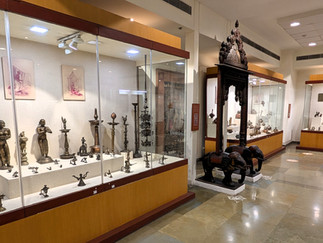





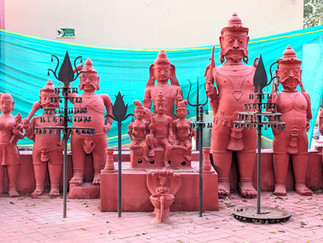





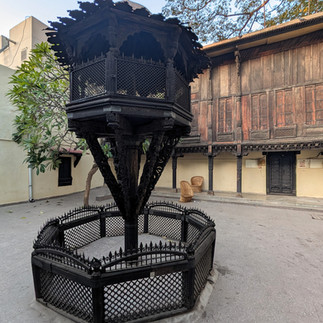



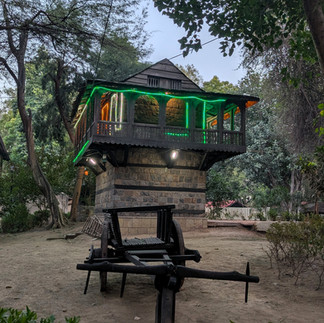

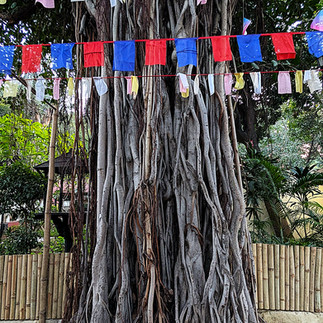







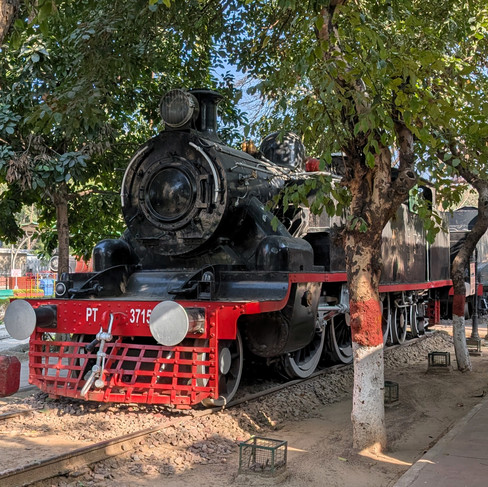



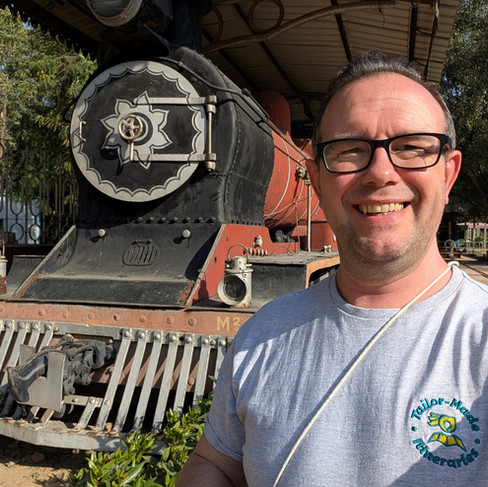









































































































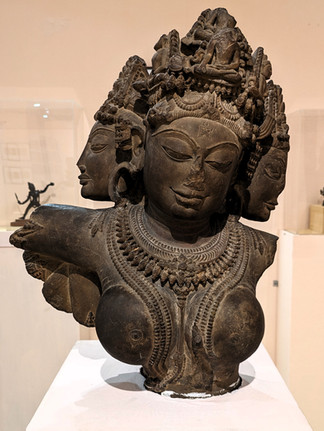













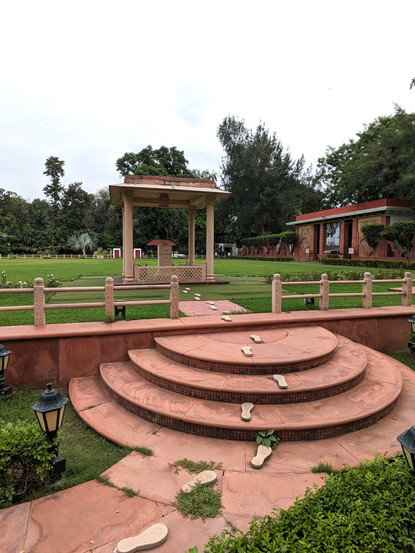

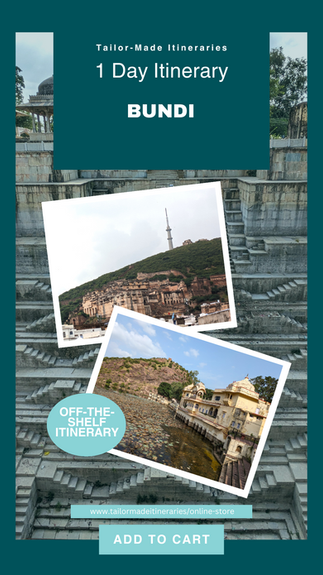



















Comments